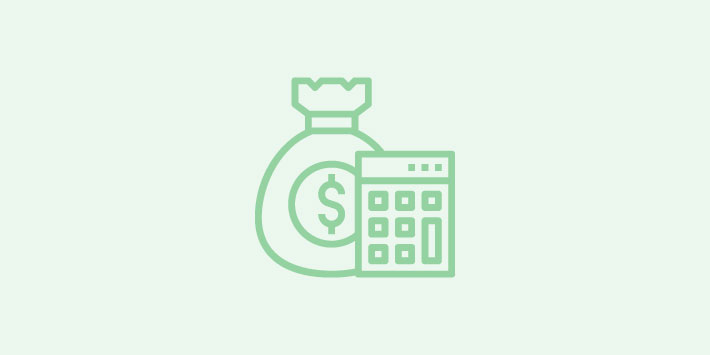7 Keyword Bidding Strategies for Google Ads
In paid search advertising, you constantly have to optimize your strategies to outrank your competitors and secure a top-of-the-page placement in the search engine results.
You want your ad to be in front of your target market. However, it’s not always as easy as it sounds. Google looks at several factors to determine the effectiveness of your pay-per-click campaigns, such as your bids and quality score—the rating of the quality and relevance of your keywords, ads, and landing pages to the search query. This explains why securing the coveted top spot on search engines is not only a matter of your target keyword, but also strongly based on your keyword bidding strategy.
Essential Google Ads Bidding Strategies to Level Up Campaign Performance
Google Ads offers flexible keyword targeting options and comprehensive optimization features, which we can break down into at least two categories: manual bidding and automated bidding. In this article, we’re breaking down some of the bidding strategies, plus the situations when they are most useful to maximize conversion.
Manual Bidding
This bidding method allows you to set the maximum cost-per-click (CPC) you are willing to pay for your ads. You can place bids at the ad group level or the keyword level and keep it consistent across your campaign. Unlike automated bidding, Google Ads sets the bid amounts for you.
Google Keyword Planner is a free keyword research tool to discover keywords related to your business and see the search volume and the estimated costs to bid on them. But, remember, these bid suggestions are mere: suggestions. With manual bidding, you can start with an amount within your ad budget and risk appetite.
Automated Bidding
With automated bidding, Google sets the bid amounts for you based on the likelihood of your ad resulting in a click or driving conversion. It is designed to maximize results based on your campaign goals.
There are at least six targeting and bidding options under this strategy, and each works best when you have historical data from previous campaigns. It is where Google ads will base its predictions on the outcome of your future bids.
1. CPC Bidding
CPC (Cost per Click) is exactly what its name means: you pay for each click on your ads. For this bidding strategy, you set a maximum CPC bid (max CPC) or the highest amount you’re willing to pay for each ad click. Google Ads will automatically manage your bids to get the most clicks possible within your budget.
2. Enhanced CPC
This option integrates manual and automatic bidding: you set the max CPC for your ad groups and keywords, but the algorithm optimizes them. It means you allow Google to automatically increase or decrease your bid amount based on the likelihood of driving the sale. Enhanced CPC is available on the Search and Display networks.
3. Target Cost Per Acquisition (CPA)
If your campaign’s primary goal is to drive conversions, target CPA bidding is the way to go. Using this method, Google Ads will set your bids on each campaign based on your CPA—your budget for each customer you acquire through your ad.
4. Target Return on Ad Spend (ROAS)
This strategy is where things get a little complex. With target ROAS, Google Ads will set your maximum bid based on the return you want from your ad spend. It means you’re targeting a sales objective instead of the number of sales.
The formula looks like this: sales / ad spend x 100% = Target ROAS. Now, let’s put that into context. Let’s say you want to earn $10 for every $2 spent. Following the formula above, your target ROAS would look like this: $10 in sales / $2 ad spend x 100% = 500% Target ROAS.
5. Cost Per View (CPV) Bidding
This bidding strategy only applies to video ads, particularly YouTube Ads, where you are paying for the views or interaction you get. The views are determined by the duration at which a user watches your video. With CPV bidding, a view is counted when a user:
- watches 30 seconds of your ad
- watches your full ad if it’s less than 30 seconds
- engages with your ad (call-to-action clicks, overlay clicks, etc.)
6. Cost Per Thousand Impressions (CPM) Bidding
If you’re prioritizing brand awareness instead of conversions, then CPM bidding is for you. Using this option, you’re technically paying for the number of times your ads appear on YouTube or the Google Display Network, regardless of whether users click through or not.
The Best Google Ad Keyword Bidding Strategy For You
Now that you understand the fundamentals of the different Google Ads bidding strategies, how would you know which bidding option is best for you? It all depends on your campaign goals, campaign volume, and budget.
For example, if you want to drive sales to your site solely, Target CPA and Target ROAS are the best options. However, if your goals are more than just converting, manual CPC bidding and CPM are some of the optimal bid types to choose from.
Conclusion
In our experience as a digital marketing agency in the Philippines, there is not a single bidding strategy that works for all campaigns. Your success in paid search marketing is dependent on your niche, the industry you are in, your campaign goals, and ultimately your understanding of how each bidding option works.
At Createmoto, we take the time to get to know your business and develop Google Ads campaigns that drive valuable results. Get in touch with us today to learn more.













